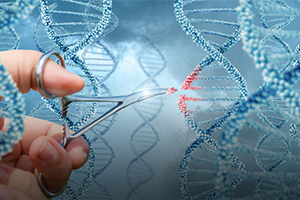Human Gene Editing
 For the first time in the U.S., researchers have demonstrated that it is possible to correct defective genes in human embryos using CRISPR genome-editing technology. As we reported previously, CRISPR (which stands for clustered regularly interspaced short palindromic repeats) works by modifying specific segments within a DNA sequence to disrupt abnormal gene expressions that cause genetic diseases. Also known as “germline engineering,” the alterations would also be passed on to subsequent generations to potentially eradicate these abnormalities.
For the first time in the U.S., researchers have demonstrated that it is possible to correct defective genes in human embryos using CRISPR genome-editing technology. As we reported previously, CRISPR (which stands for clustered regularly interspaced short palindromic repeats) works by modifying specific segments within a DNA sequence to disrupt abnormal gene expressions that cause genetic diseases. Also known as “germline engineering,” the alterations would also be passed on to subsequent generations to potentially eradicate these abnormalities.
In earlier experiments conducted in China, the technique was found to cause an effect called mosaicism, in which only some cells of the embryo were changed. However, this latest research indicates that, by injecting CRISPR into the eggs earlier (i.e., at the same time they are fertilized with sperm), mosaicism can be avoided.
While none of the embryos were allowed to develop beyond a few days, and none were ever intended to be implanted into a womb, critics are understandably concerned about the use of genetic engineering to create “designer babies” or “enhanced humans.” In the U.S., the intelligence community has labeled CRISPR as a potential “weapon of mass destruction” and any attempts to allow an edited embryo to develop to full term have been blocked by Congress. But these legal restrictions do not apply worldwide, and it’s likely that this milestone is just the beginning of an inevitable journey toward genetically engineered humans.
For information: Shoukhrat Mitalipov, Oregon Health and Science University, 3181 S.W. Sam Jackson Park Road, Portland, OR 97239; phone: 503-418-0196; email: mitalipo@oshu.edu; Web site: http://www.ohsu.edu/xd/